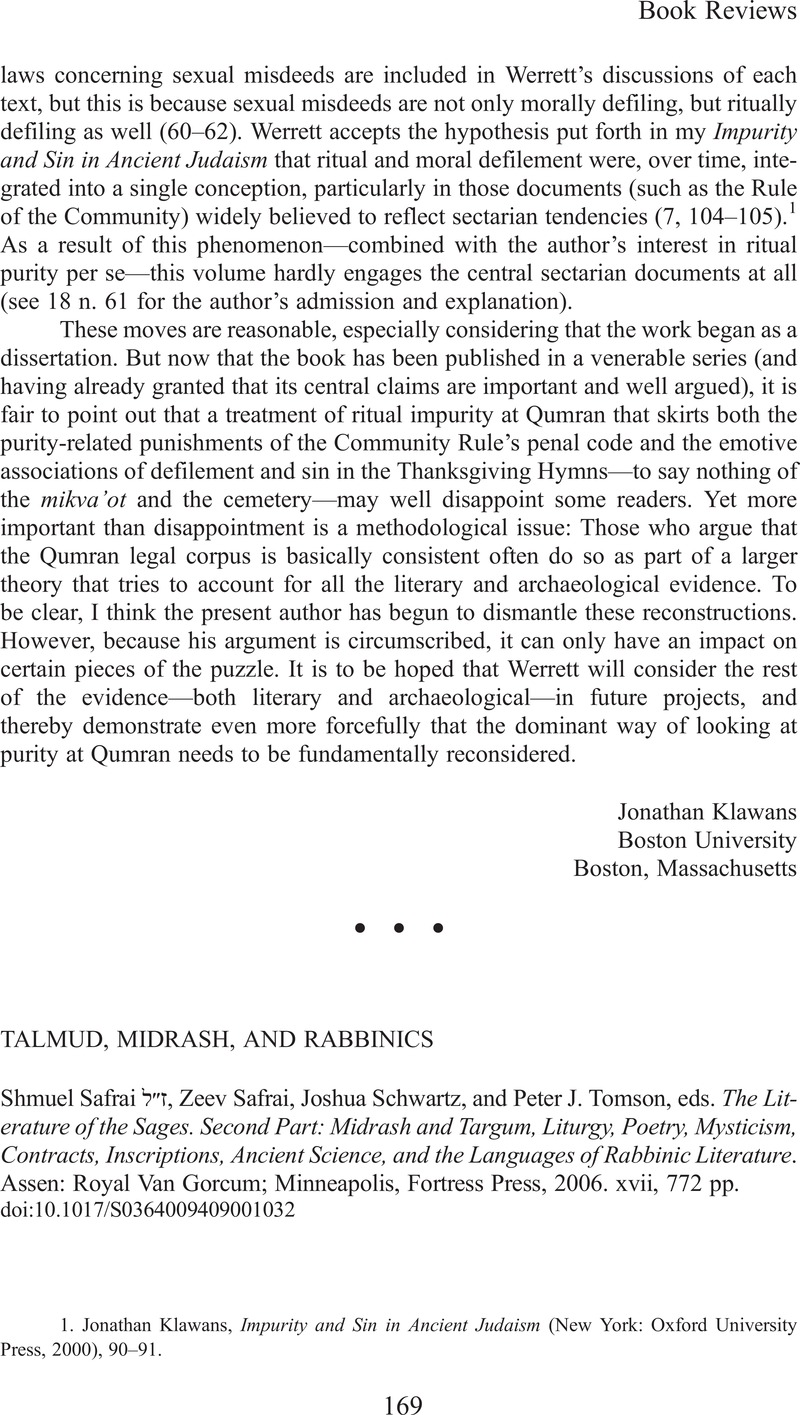No CrossRef data available.
Article contents
Shmuel Safrai ז״ל, Zeev Safrai, Joshua Schwartz, and Peter J. Tomson, eds. The Literature of the Sages. Second Part: Midrash and Targum, Liturgy, Poetry, Mysticism, Contracts, Inscriptions, Ancient Science, and the Languages of Rabbinic Literature. Assen: Royal Van Gorcum; Minneapolis, Fortress Press, 2006. xvii, 772 pp.
Published online by Cambridge University Press: 30 March 2009
Abstract

- Type
- Book Reviews: Talmud, Midrash, and Rabbinics
- Information
- Copyright
- Copyright © Association for Jewish Studies 2009
References
1. For an overview of the most recent contributions, see Miller, Stuart S., “Roman Imperialism, Jewish Self-Definition, and Rabbinic Society: Belayche's Iudaea-Palaestina, Schwartz's Imperialism and Jewish Society, and Boyarin's Border Lines Reconsidered,” AJS Review 31, no. 2 (2007): 329–62CrossRefGoogle Scholar.
2. In addition to the works discussed by Miller in n. 1, see the growing body of remarkable work by Yaakov Elman, his students, and associates on reading the Talmud Bavli against the background of Sasanian legal compilations and other cultural intertexts: Elman, Yaakov, “Middle Persian Culture and Babylonian Sages: Accommodation and Resistance in the Shaping of Rabbinic Legal Tradition,” in Fonrobert, Charlotte E. and Jaffee, Martin S., eds., The Cambridge Companion to the Talmud and Rabbinic Literature (Cambridge: Cambridge University Press, 2007), 165–97CrossRefGoogle Scholar; Herman, Geoffrey, “Ahasuerus, the Former Stable-master of Belshazzar, and the Wicked Alexander of Macedon: Two Parallels between the Babylonian Talmud and Persian Sources,” AJS Review 29, no. 2 (2005): 283–97CrossRefGoogle Scholar; and Kiperwasser, Reuven and Shapira, Dan, “Irano-Talmudica I: The Three-Legged Ass and Ridya in B. Ta'anith: Some Observations about Mythic Hydrology in the Babylonian Talmud and in Ancient Iran,” AJS Review 32, no. 1 (2008): 101–16CrossRefGoogle Scholar.


